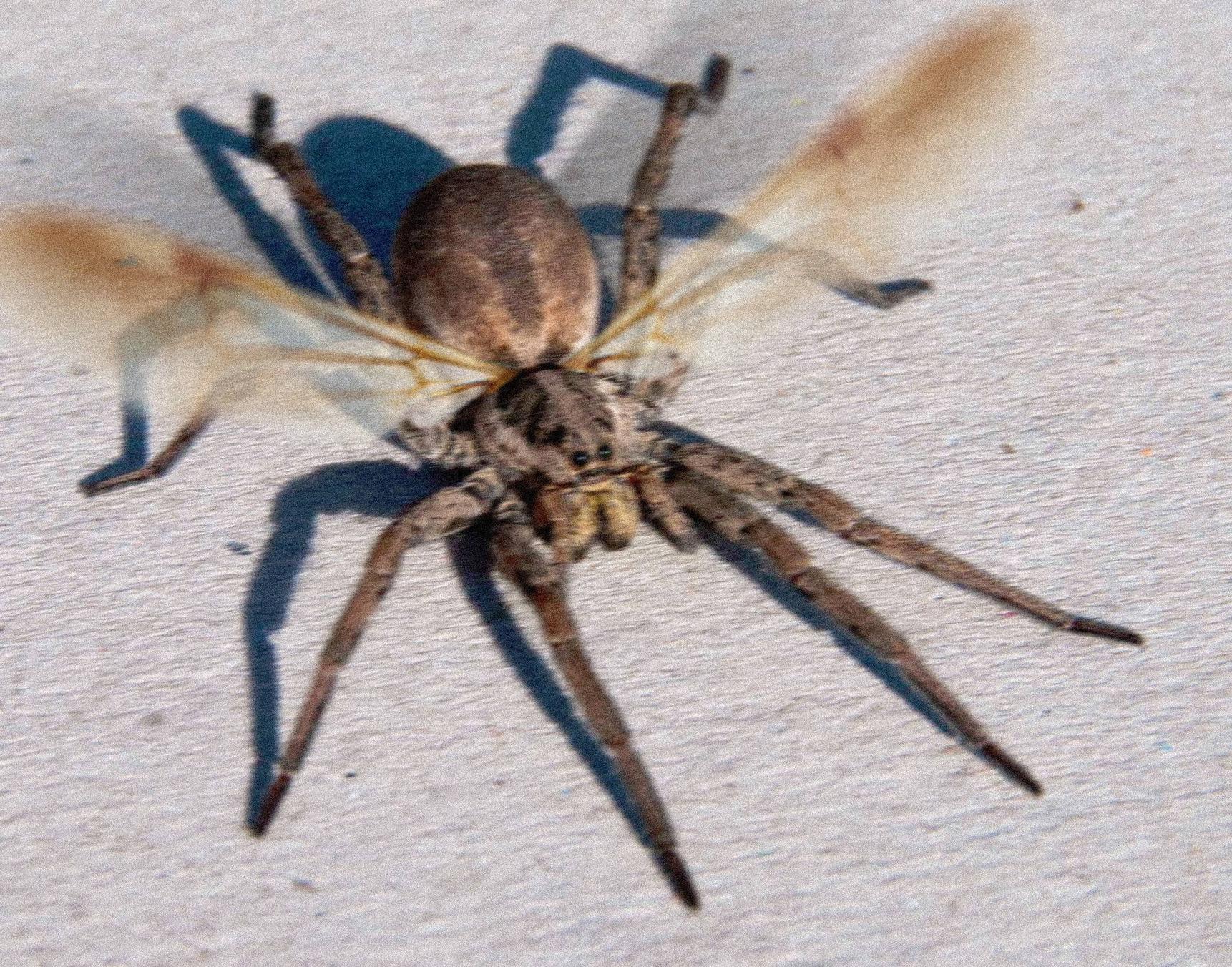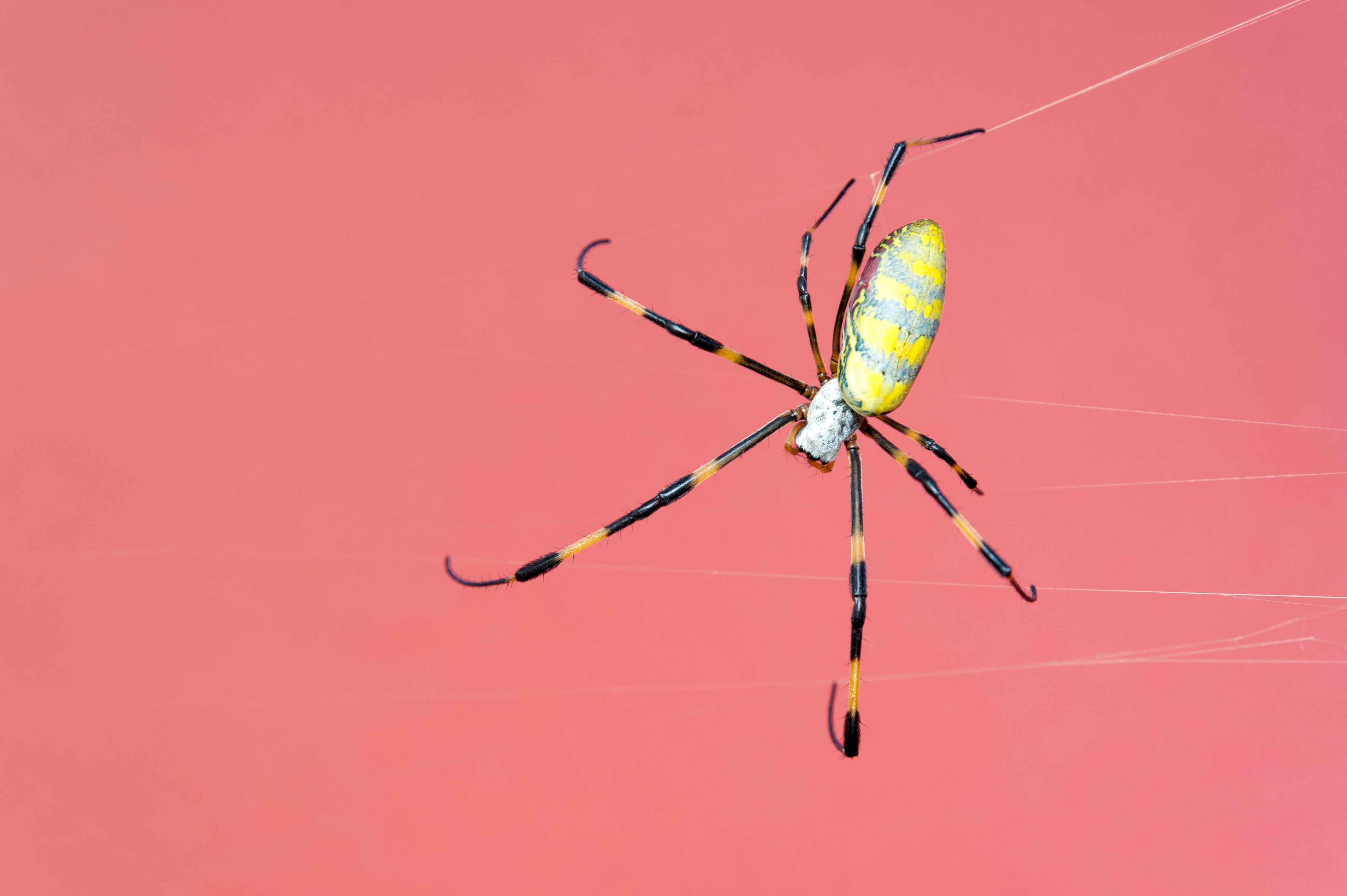Flying Spider Biology

Flying spiders – Spiders are not typically known for their ability to fly. However, some spider species have evolved unique adaptations that enable them to fly or glide through the air. These adaptations provide these spiders with several ecological advantages, including the ability to escape predators, reach new habitats, and capture prey.
Flying spiders, a marvel of nature, can be found in many parts of the world. Their ability to disperse over long distances is due to their unique ability to use the wind to carry them. Like Alec Baldwin , a man of many talents, these spiders are masters of their own domain.
They use their webs to catch prey, and their ability to fly allows them to escape predators. Flying spiders are a fascinating example of the diversity of life on Earth, and their unique adaptations are a testament to the power of evolution.
Anatomical Adaptations
Flying spiders possess several anatomical adaptations that allow them to fly or glide. These adaptations include:
- Enlarged opisthosoma: The opisthosoma, or abdomen, of flying spiders is often enlarged and flattened, providing a greater surface area for lift.
- Modified spinnerets: Flying spiders have modified spinnerets that produce silk threads that are wider and flatter than those produced by other spiders. These threads create a larger surface area for lift, allowing the spider to stay airborne.
- Long, hair-like setae: Many flying spiders have long, hair-like setae on their legs and opisthosoma. These setae help to trap air and create drag, further increasing lift.
Examples of Flying Spiders
Several species of spiders are known for their ability to fly or glide. These include:
- Parachutes spiders (family: Salticidae): Parachute spiders are small spiders that use their silk to create a parachute-like structure that allows them to glide through the air.
- Ballooning spiders (family: Theridiidae): Ballooning spiders release long strands of silk that catch the wind, carrying them aloft. This allows them to travel long distances and colonize new habitats.
- Flying spiders (family: Deinopidae): Flying spiders are large, nocturnal spiders that use their enlarged opisthosoma and modified spinnerets to fly short distances.
Ecological Advantages and Disadvantages
The ability to fly or glide provides several ecological advantages for spiders. These advantages include:
- Escaping predators: Flying spiders can use their ability to fly or glide to escape from predators.
- Reaching new habitats: Flying spiders can use their ability to fly or glide to reach new habitats, which can increase their chances of finding food and mates.
- Capturing prey: Some flying spiders use their ability to fly or glide to capture prey.
However, the ability to fly or glide also has some disadvantages for spiders. These disadvantages include:
- Increased energy expenditure: Flying or gliding requires a lot of energy, which can be a disadvantage for spiders that have limited food resources.
- Increased risk of predation: Flying spiders are more visible to predators when they are in the air, which can increase their risk of being eaten.
Spider Flight Mechanisms: Flying Spiders

Spiders, despite their predominantly terrestrial nature, exhibit remarkable adaptations that allow certain species to take to the skies. These aerial maneuvers are facilitated by ingenious mechanisms that generate lift and provide control during flight.
Spiders employ two primary methods to achieve flight: ballooning and gliding. Ballooning involves harnessing the wind’s power by releasing silk threads that act as miniature parachutes, carrying the spider aloft. In contrast, gliding entails launching themselves from elevated surfaces and spreading their legs to create a larger surface area, enabling them to glide through the air.
Silk’s Role in Spider Flight
Silk, a versatile material produced by spiders, plays a crucial role in their flight capabilities. Ballooning spiders release long, fine silk threads that catch the wind, creating an upward force that lifts them into the air. These threads can extend up to several meters in length, allowing the spider to ascend to considerable heights.
Moreover, silk provides stability and control during flight. By manipulating the tension and orientation of the silk threads, spiders can steer and maneuver in the air. They can alter their direction, ascend, or descend by adjusting the tension and release of the silk.
Comparative Flight Capabilities
Different spider species exhibit varying flight capabilities, depending on their morphology and adaptations. Some species, like the common garden spider (Araneus diadematus), are adept at ballooning, using their long silk threads to travel long distances. Others, such as the gliding spider (Poltys illepidus), possess specialized leg structures that allow them to glide over short distances.
The size and weight of the spider also influence its flight abilities. Smaller spiders with a lower mass-to-surface area ratio are better suited for ballooning, while larger spiders may be more efficient at gliding.
Ecological Significance of Flying Spiders

Flying spiders, with their unique ability to disperse through the air, play a crucial role in ecosystems. They impact both prey and predator populations, influencing ecological balance and biodiversity.
Impact on Prey Populations
Flying spiders are efficient predators, capturing prey ranging from insects to small vertebrates. Their ability to fly allows them to access prey in different habitats and at various heights. This predation pressure can regulate prey populations, preventing overabundance and maintaining ecosystem stability.
Impact on Predator Populations
Flying spiders also serve as prey for birds, bats, and other predators. Their aerial presence increases their vulnerability to these predators, which in turn influences the population dynamics of higher trophic levels. By providing a food source for predators, flying spiders contribute to the overall food web structure and energy flow.
Ecological Balance and Biodiversity
The dispersal capabilities of flying spiders facilitate gene flow between populations, promoting genetic diversity. This genetic exchange can enhance the resilience of spider populations to environmental changes and contribute to the maintenance of biodiversity. Additionally, flying spiders can act as vectors for plant seeds, aiding in the dispersal of vegetation and shaping plant communities.
Areas for Further Research
Despite the recognized ecological significance of flying spiders, much remains unknown about their specific roles and interactions within ecosystems. Future research should focus on:
- Quantifying the impact of flying spiders on prey and predator populations in different habitats.
- Investigating the role of flying spiders in seed dispersal and its implications for plant communities.
- Examining the genetic diversity and connectivity of flying spider populations across landscapes.
By expanding our understanding of flying spider ecology, we can gain valuable insights into the dynamics and functioning of ecosystems and contribute to conservation efforts aimed at maintaining ecological balance and biodiversity.
The sight of flying spiders is often met with fear or disgust, but for some, it is a source of fascination. These creatures, with their ability to glide through the air, have captured the imagination of humans for centuries. In the world of literature, flying spiders have been featured in countless works, from the fantastical to the horrifying.
One such work is ” The Acolyte Rotten “, a dark and twisted tale that explores the depths of human depravity. The novel’s protagonist, a young woman named Anya, is haunted by visions of flying spiders, a symbol of her own inner demons.
As she delves deeper into the mystery surrounding her past, she discovers that the spiders are more than just a figment of her imagination.
Flying spiders, with their uncanny ability to soar through the air, have captivated the imaginations of scientists and enthusiasts alike. Among those intrigued by these arachnid marvels is the acclaimed actor Dean-Charles Chapman. Chapman’s fascination with the natural world extends to these airborne wonders, and his keen observation has shed light on their intriguing behaviors and ecological significance.
The world of flying spiders continues to unravel, inviting us to delve deeper into their fascinating realm.
As I ventured into the twilight shadows, my gaze was drawn to the ethereal dance of flying spiders, their silken threads weaving intricate patterns in the fading light. These enigmatic creatures, with their arachnid allure, reminded me of the acolyte rotten , whose corrupt heart and venomous tongue spun a web of deception and decay.
Yet, amidst the darkness, the spiders’ graceful movements brought a sense of wonder, a reminder that even in the most sinister corners, beauty and mystery can coexist.
Flying spiders, with their ethereal movements, are a captivating sight. Their airborne journeys bring to mind the age-old question: what time does the acolyte come out ? Like the spiders, the acolyte emerges at a specific hour, bringing with them a sense of mystery and anticipation.
As the flying spiders dance through the air, they serve as a reminder of the cyclical nature of time and the inevitability of both arrival and departure.